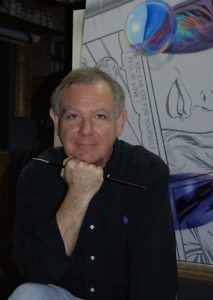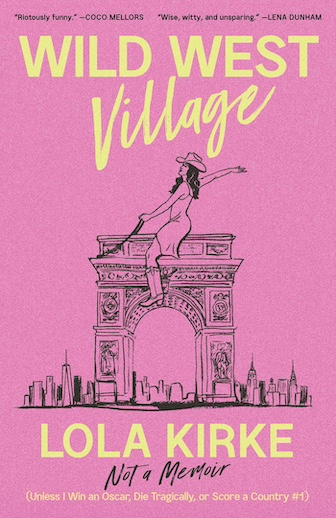A Fuller, Deeper Realization of the World
Objects compel attention in the art of Glennray Tutor
“To me, physical objects are portals to a fuller, deeper realization of the world around me,” says painter Glennray Tutor in Portals, a stunning selected retrospective of his work that also features a lengthy interview with the artist. Tutor’s paintings allow the viewer to regard objects with the same intensity he does, luring the eye to perceive the power and significance of surfaces.
 Tutor’s work is usually classified as Photorealism, a school of art that arose in the 1960s in a general trend away from abstraction toward realism and representation. The early Photorealists used photographs as the basis for artworks that re-created the source image in all its detail and precision. The term, along with Hyperrealism, is used more broadly now to refer to work, especially painting, that features elements of the Photorealist aesthetic, including a dedication to photograph-like clarity and a focus on quotidian subject matter.
Tutor’s work is usually classified as Photorealism, a school of art that arose in the 1960s in a general trend away from abstraction toward realism and representation. The early Photorealists used photographs as the basis for artworks that re-created the source image in all its detail and precision. The term, along with Hyperrealism, is used more broadly now to refer to work, especially painting, that features elements of the Photorealist aesthetic, including a dedication to photograph-like clarity and a focus on quotidian subject matter.
A sizeable percentage of the paintings included in Portals, particularly those from the 1980s and 1990s, show Tutor engaged with what might be called classic Photorealist imagery—storefronts, motels, vehicles, commercial signage. In Tutor’s case, most of these subjects have a rural context and are of a post-WWII vintage, but the paintings aren’t nostalgic. Rather, they capture their subjects with the vividness and immediacy of a child’s gaze, through which surfaces are not only sufficient but also revelatory.
That’s not to say there aren’t flashes of humor and irony embedded here and there. “Premium and Regular” (1990) features two virtually identical gas pumps, differentiated only by their labels. “Discount” (1996) depicts a fireworks stand housed in a decrepit school bus with its tires sunk hubcap-deep into the ground. A sign in the back window says “Open,” and American flags fly from the roof, but the overall effect is a picture of decay. It’s hard not to see some political commentary here, especially at the thought that this stationary hulk is filled with explosives.
 Tutor’s Long Life series, by contrast, seems deliberately optimistic and naïve. These paintings, which were created over many years, feature jars of home-canned food and commercial bottles of hot sauce and the like. They’re mostly presented without context, simply placed in stark relief against a dark backdrop. The early paintings in the series have a prosaic quality, but over time Tutor uses deeper, more saturated colors, and the paintings take on a fantastic lusciousness that both echoes commercial food porn and transcends it, all the while invoking the sumptuous beauty of seventeenth-century Dutch still lifes.
Tutor’s Long Life series, by contrast, seems deliberately optimistic and naïve. These paintings, which were created over many years, feature jars of home-canned food and commercial bottles of hot sauce and the like. They’re mostly presented without context, simply placed in stark relief against a dark backdrop. The early paintings in the series have a prosaic quality, but over time Tutor uses deeper, more saturated colors, and the paintings take on a fantastic lusciousness that both echoes commercial food porn and transcends it, all the while invoking the sumptuous beauty of seventeenth-century Dutch still lifes.
In recent years, Tutor’s subjects have become increasingly fanciful, often featuring brightly-packaged home fireworks and children’s toys, rendered up close and oversized, as a child might see them. All is not sweet innocence here—the warnings on the fireworks are prominent; matches lie about in temptation. “Phoenix” (2004) shows a bright red ashtray filled with colorful marbles. The close-up perspective makes them seem gigantic, as if they might fill a child’s arms, while the ashtray delivers a slightly darker message and reminds the viewer that they are, after all, just marbles.
Although only a few of the paintings in Portals seem to carry an obvious narrative element, the book’s long interview, conducted between the artist and his son, artist Zach Tutor, reveals that many if not most of them do contain a narrative for their creator. Speaking about “Phoenix,” Tutor describes it as an homage to his parents, who smoked:
She was beautiful. He was handsome. They had a long, happy marriage. They enjoyed life. I loved to watch them take a cigarette out of a pack, place it between their lips, flick open a lighter, and light the cigarette. This motion was as graceful as a ballet. The Phoenix is a legendary bird that lived for 500 years, burned itself to the ashes, then rose from the ashes to live on.
Tutor, who grew up in Missouri but now makes his home in Oxford, Mississippi, speaks often in the interview about his early years and their formative effect on his art. The conversation between father and son ranges from gentle reminiscence to serious discussion of the concepts underlying the elder’s work. Like the paintings, their exchange is engaging, varied, and somehow deeply joyful. Unlike the typical artist’s statement, it gives an intimate sense of the intellect and energy behind the art, and it serves to make Portals a worthy encapsulation of Tutor’s remarkable body of work.

Maria Browning is a fifth-generation Tennessean who grew up in Erin and Nashville. Her work has appeared in Guernica, Literary Hub, Hippocampus and Still. She is the managing editor of Chapter 16. .


